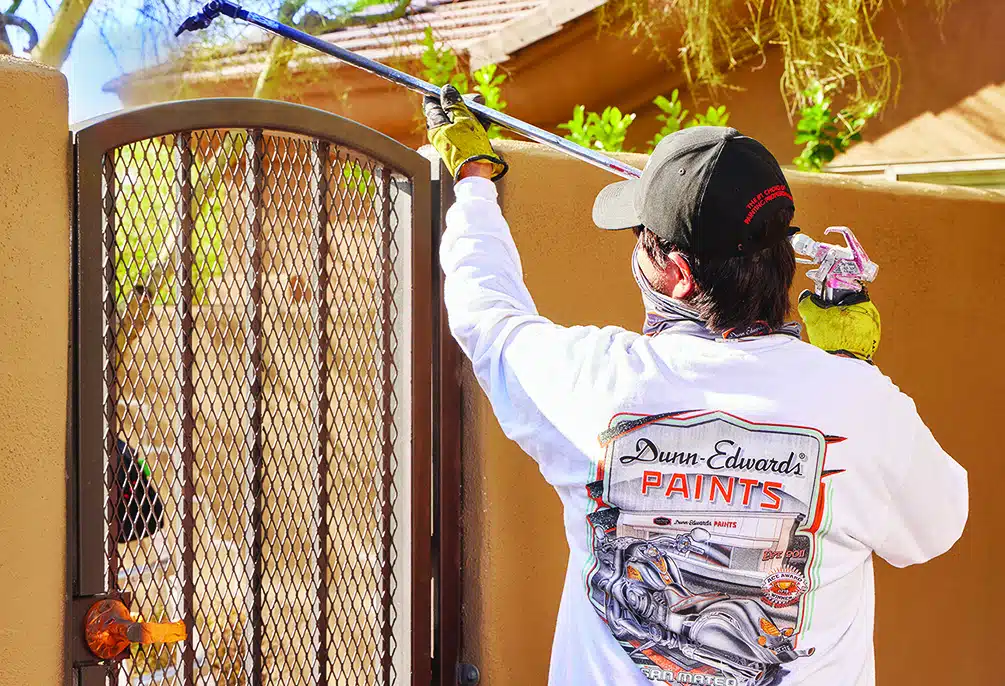Dunn-Edwards Opens the World’s First LEED-Certified* Paint Manufacturing Facility
PHOENIX, Ariz. - (June 3, 2011) Dunn-Edwards, the Southwest's leading manufacturer of premium paints, announces the opening of the world's first LEED-certified* paint manufacturing facility. Located in Phoenix, the 336,000-sq.-ft. facility was custom designed to be the greenest and most efficient in the coatings industry. This ultra-modern building encompasses manufacturing, product development, quality control laboratories, a distribution center, retail outlet and office space.
“We have incorporated innovative, energy-efficient equipment and protocols, such as unique dust collection systems that capture and recycle particulates, and novel wastewater recycling techniques. Our systems are classified as ultra-low discharge, meaning that waste generation is greatly minimized,” said Karl Altergott, president.
Dunn-Edwards is considered one of the most environmentally-friendly paint manufacturers and an industry leader in eco-efficient principles - all part of its Greener by Design® philosophy. For example, throughout its operations the company focuses on initiatives such as energy efficiency, waste minimization, recycling, emissions reduction, and health and safety protection. “So, not only are we manufacturing paint that is more eco-friendly, we have taken great steps to conserve energy and material resources, and to reduce waste in our physical environment,” said Altergott.
Even small changes can add up to big eco-savings. The company eliminated cardboard boxes for packaging one-gallon containers and now use heat shrink wrap. Dunn-Edwards is the only paint plant in the United States using heat shrink wrap. This amounts to a reduction of cardboard consumption by one million boxes, which equates to approximately 250 tons of cardboard per year.
Altergott reports that energy calculations on the new plant show a 50 percent reduction over its two existing operations; one was first built in the mid-1950s and the other in the mid-1970s. “Our innovative automation at the new plant is one of the most comprehensive systems in the industry and light years beyond what we had at the older facilities,” he explained. “We are so much more efficient - saving time, money and resources. Increased automation has reduced the physical demands of workers, and thus potential injuries.” With more than 50 percent more space than our two former plants combined, this new plant meets Dunn-Edwards' needs for long-term growth and has room to expand another 40,000 sq. ft.
According to Phoenix Mayor Phil Gordon, this project is a great example of the Greater Phoenix Economic Council, Arizona Commerce Authority, and City of Phoenix working together to bring an industry leader and subsequent jobs to the region. 'Dunn-Edwards is investing in its future in Phoenix by adding more than $40 million in capital investments and creating approximately 150 much needed new jobs,' said Mayor Phil Gordon. 'By working together on this project, the end result is a growing Phoenix economy with new jobs.'
Barry Broome, president and CEO of the Greater Phoenix Economic Council, added, “Dunn-Edwards joins several new companies focused on green and sustainable solutions that have chosen Arizona because of its emerging reputation in this sector. The City of Phoenix and the Arizona Commerce Authority provided strong leadership in supporting Dunn-Edwards' efforts to expand to Greater Phoenix, and we welcome them to our pro-business environment.”
An official grand opening was held Friday, June 3, 2011. A ribbon cutting ceremony with city officials, including Phoenix Mayor Phil Gordon, begins at 11 a.m., followed by plant tours and lunch. (NOTE: Event is for invited guests and media only.) The plant is located at 520 S. 67th Avenue, Phoenix, Arizona, 85043. For more information about Dunn-Edwards, visit www.dunnedwards.com
*LEED certification approved with Gold Award June 2011.
Paint experts available for interview
Color and design trends
Environmental issues
Technical product specs
Paint and prep problem solving






